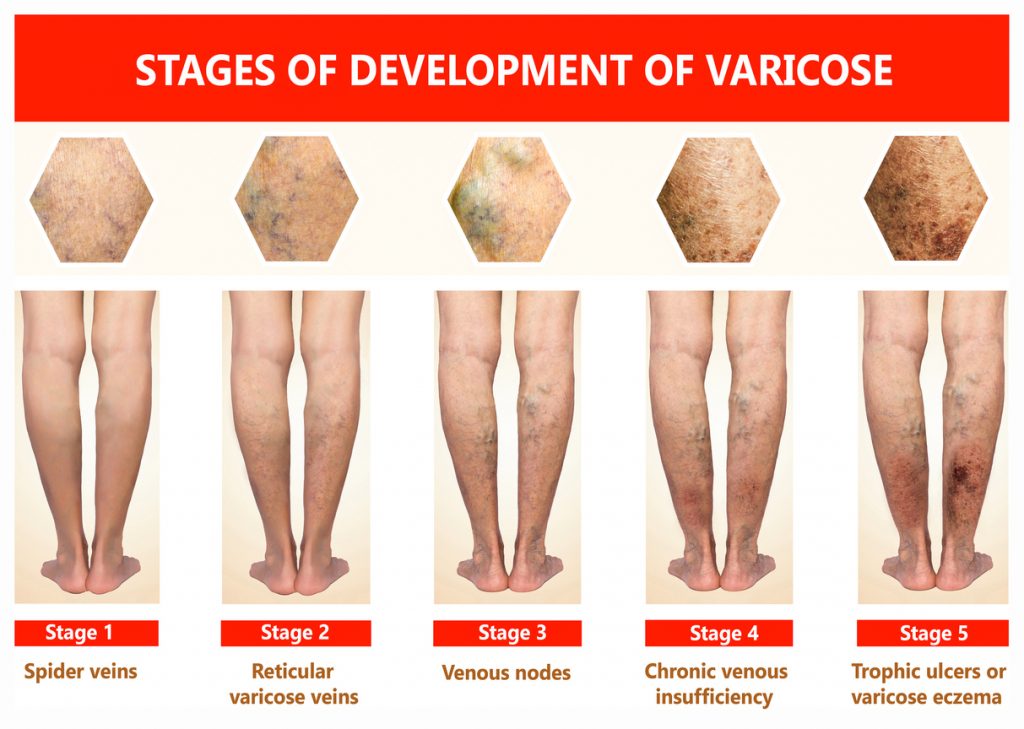
If you have venous insufficiency, you may be subject to venous ulcer disease — a condition that causes open sores to form on your legs. Venous insufficiency occurs more in women than in men and may worsen with age. It’s caused by the inability of veins in your legs to return blood to your heart. As a result, swelling occurs. If a vein swells too much, the skin may break, causing ulcers to form.
Table of Contents
ToggleWhat You Should Know About Venous Ulcers
Venous ulcers mostly occur in and around the bony areas of your legs, including the ankles. In some instances, they may form in the areas behind your knees. Ulcers are open sores that require specialized treatment to heal. In many patients, they heal within 1 to 2 weeks. Complicated cases may take 3 to 4 months to heal completely. If you suffer from venous ulcer disease, schedule a consultation with the Vein and Vascular Institute today to discuss venous ulcer treatment.
What Causes Venous Ulcer Disease?
Ultimately, venous ulcer disease is caused by poor blood circulation in your legs. But what causes poor circulation? Many variables, including:
- Damage to the valves inside your leg veins
- Bulging or varicose veins in your legs
- Venous insufficiency
- Injury to the leg
- Normal aging
- Phlebitis
- Deep vein thrombosis
Obesity may contribute to venous ulcer disease. So may a sedentary lifestyle. Anything that interferes with the flow of circulation between your heart and your extremities may cause ulcers to form on specific areas of your legs.
Venous Ulcer Treatment
Venous ulcer treatment focuses on fixing the underlying circulatory issues that are causing the ulcers to form. This may include early intervention when varicose veins first appear. By treating varicose veins using minimally invasive approaches such as sclerotherapy or ambulatory phlebectomy, you can lessen your chances of developing leg ulcers. This may also help any ulcers that appear to heal more quickly and with less intervention. The Vein and Vascular Institute can treat varicose veins before they contribute to venous ulcers in the following ways:
Sclerotherapy
Sclerotherapy is used in the treatment of both varicose and spider veins. A salt solution is injected directly into the vein, causing it to collapse. The blood within then clots and fades from sight over time. This not only lessens the unsightly appearance of such veins, but it’s also effective as an early preventive measure in venous ulcer treatment.
Ambulatory Phlebectomy
During an ambulatory phlebectomy, varicose veins are surgically removed through small incisions in the skin using a hook or retractor to grasp the vein and pull it out. Ambulatory phlebectomy is performed under simple, local anesthetic, and patients are up and walking around immediately after surgery. This preventive measure not only removes unsightly, bulging veins, but also lessens your chances of developing venous ulcers. Phlebectomy is generally considered more effective than sclerotherapy, though both are solid treatment options for varicose veins. Both are easily performed at the Vein and Vascular Institute.
Caring for Your Venous Ulcer
Venous ulcers require special treatment to heal. You can help expedite healing by performing the following routine:
- Clean and dress your wound regularly
- Use antibacterial ointment beneath your dressing
- Take oral antibiotics as supplied by your vein specialist to reduce the risk of infection
- Elevate your legs as much as possible throughout the day
Once your ulcer has healed, you can help prevent future occurrences by wearing compression stockings, losing extra weight, and by making simple lifestyle changes such as refraining from smoking and engaging in daily exercise.
Meet our vein physicians in New Jersey today when you book a consultation with Vein and Vascular Institute. We offer simple solutions to varicose veins, and we can stop venous ulcer disease before sores begin to form. Call today for more information.
